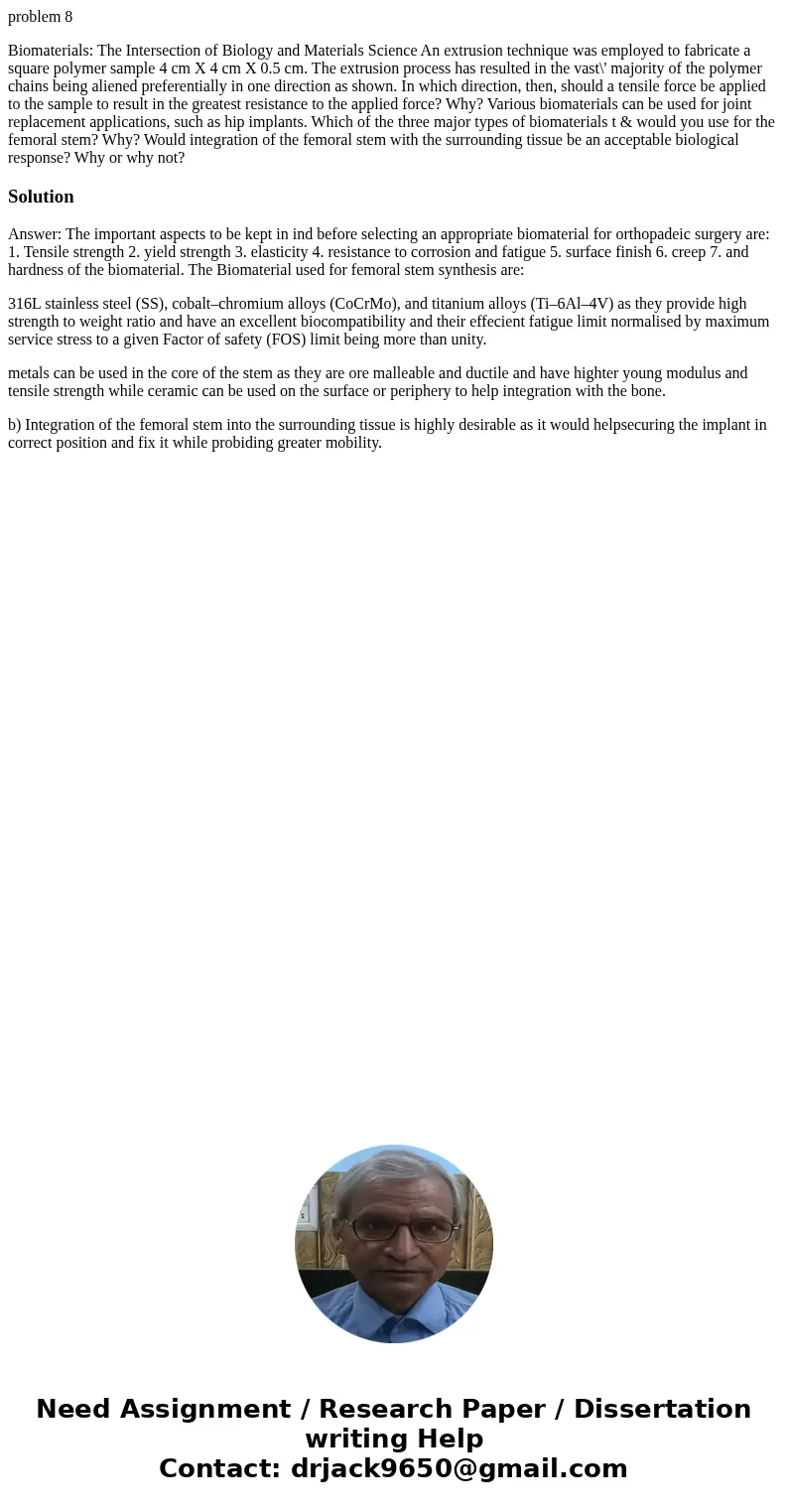problem 8 Biomaterials The Intersection of Biology and Mater
problem 8
Biomaterials: The Intersection of Biology and Materials Science An extrusion technique was employed to fabricate a square polymer sample 4 cm X 4 cm X 0.5 cm. The extrusion process has resulted in the vast\' majority of the polymer chains being aliened preferentially in one direction as shown. In which direction, then, should a tensile force be applied to the sample to result in the greatest resistance to the applied force? Why? Various biomaterials can be used for joint replacement applications, such as hip implants. Which of the three major types of biomaterials t & would you use for the femoral stem? Why? Would integration of the femoral stem with the surrounding tissue be an acceptable biological response? Why or why not?Solution
Answer: The important aspects to be kept in ind before selecting an appropriate biomaterial for orthopadeic surgery are: 1. Tensile strength 2. yield strength 3. elasticity 4. resistance to corrosion and fatigue 5. surface finish 6. creep 7. and hardness of the biomaterial. The Biomaterial used for femoral stem synthesis are:
316L stainless steel (SS), cobalt–chromium alloys (CoCrMo), and titanium alloys (Ti–6Al–4V) as they provide high strength to weight ratio and have an excellent biocompatibility and their effecient fatigue limit normalised by maximum service stress to a given Factor of safety (FOS) limit being more than unity.
metals can be used in the core of the stem as they are ore malleable and ductile and have highter young modulus and tensile strength while ceramic can be used on the surface or periphery to help integration with the bone.
b) Integration of the femoral stem into the surrounding tissue is highly desirable as it would helpsecuring the implant in correct position and fix it while probiding greater mobility.

 Homework Sourse
Homework Sourse